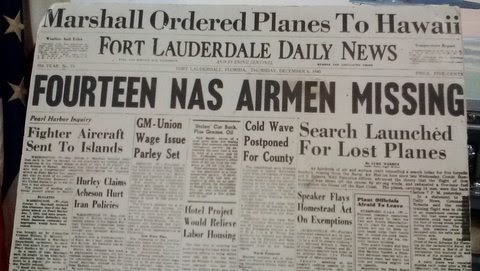 |
| Goodyear Blimp 1980 State Archives of Florida/Hastings |
Goodyear Blimp Base
1500 NE 5th Ave., Pompano Beach, Fl 33060
Passenger rides no longer available except by invitation
Base tours only
954-946-8300
By Jane Feehan
Goodyear blimps have been capturing live sporting events for
broadcasting long before drones. They’re still at it. These blimps also capture
the attention of residents and visitors to South Florida. They seldom fail to stop
conversations or to draw eyes upward as they majestically glide by.
Goodyear first built airships in 1917 for use in World War
I. In 1919 after the conflict ended, the company started building their own for
commercial interests. They launched the Pilgrim, Puritan, Volunteer, Mayflower,
Vigilant, and Defender in the years that followed. Built at Wingfoot
Lake, Ohio blimps were named after winners of America’s Cup, the
international sailing race. This naming protocol was used until early 21st
century.
The company opened a blimp base on Watson Island in Miami in
1930, where it remained until 1978. The blimps cruising over Fort Lauderdale* flew
from that base until Goodyear lost its lease (see link below about airship blimpcasting”
over Fort Lauderdale in 1948). By 1978, they were known for covering Superbowl
and Orange Bowl games and other events. Though Hollywood, Florida made a pitch
for relocating the base to their city, Goodyear settled on Pompano Beach.
Pompano Beach “blimpmania” began in August 1979 when its City
Commission approved the deal: $25,000 a year for a 30-year lease for 22 acres
at their air park. Many hoped the ship would put Pompano Beach on the map and serve
as goodwill ambassador for the city. The Pompano Beach Chamber of Commerce sponsored
a parade and red-carpet welcome held November 9th for the maiden
voyage of Goodyear’s Enterprise. Mayor Emma Lou Olson christened the
airship before thousands who gathered for the event. By November 28 rides were available
to the public for $7.50 for adults and $5 for children under 12.
A 45,000 square foot
hangar was built to house the airship. Permanent administrative offices were dedicated
in 1986. Enterprise was replaced
in 2017 or 2018 by Wingfoot Two (named by Akron, Ohio native and wife of basketball
great LeBron James, Savannah James).
About airship construction, movement and use
Today’s Goodyear airship models are not technically blimps. No
longer bags of highly flammable hydrogen, their fleet is comprised of semi-rigid
structures filled with helium and air. Pilot Tracey Lawford says today’s models
fly with engines that swivel and use propellers. Control of the balance of helium
and air pressure moves the craft through the air. “Today they are much easier
to maneuver,” says Lawford. She also flies helicopters and says the craft ascends
much the same as a helicopter. Wingfoot Two cruises 40-45 mph and is
quieter than older airships.
 |
| Goodyear blimp tourists in Miami 1960 State Archives of Florida/Hansen |
Today’s mission for the Goodyear airships is primarily
advertising but its Stars and Stripes was pulled into emergency service
after the devastating Hurricane Andrew in 1992. It flashed signs about relief
supply locations to storm survivors.
Lawford stresses the importance of the ground crew in the
movement of Wingfoot Two. A retinue of 20 staff travels to events. It
includes two trucks with one serving as a mechanic shop. Destinations are
scoped out ahead of a temporary relocation to make sure the landing area is
level and free from mud for a flight. Ground crews are instrumental in ship launch
and landing.
Airships no longer leave Pompano Beach for six months a year
as they used to. Travel is assignment-based after which they return home. There
are three bases today: Carson, California, Wingfoot Lake in Ohio and Pompano
Beach, Florida (one in Spring, Texas closed in 1992). These craft do not fly in
the cold.
We don’t see them as much as we used to in Fort Lauderdale
due to air traffic patterns of the Fort Lauderdale-Hollywood International
Airport, but when we do, there is always a sense of ... WOW!
* About blimpcasting over Fort Lauderdale in 1948
https://janeshistorynook.blogspot.com/2013/09/look-in-sky-its-flashing-its-news-fort.html
About the Defender and Seminole passengers:
https://janeshistorynook.blogspot.com/2020/08/a-cultural-exchange-seminoles-take.html
About the Graf Zeppelin trip to Miami:
https://janeshistorynook.blogspot.com/2019/06/celebrated-graf-zeppelin-lands-in-miami.html
Fort Lauderdale News, Jan. 16, 1979
Fort Lauderdale News July 10, 1979
Fort Lauderdale News July
11, 1979
Fort Lauderdale News, Aug. 8, 1979
Fort Lauderdale News, Nov. 2, 1979
Fort Lauderdale News, Nov. 9, 1979
South Florida Sun-Sentinel, Oct. 22, 2016
Fort Lauderdale News, Jan. 19, 1986
Goodyear Blimp:
https://www.goodyearblimp.com/behind-the-scenes/airship-bases.html
https://www.goodyearblimp.com/relive-history/blimp-history.html













.jpg)
.jpg)